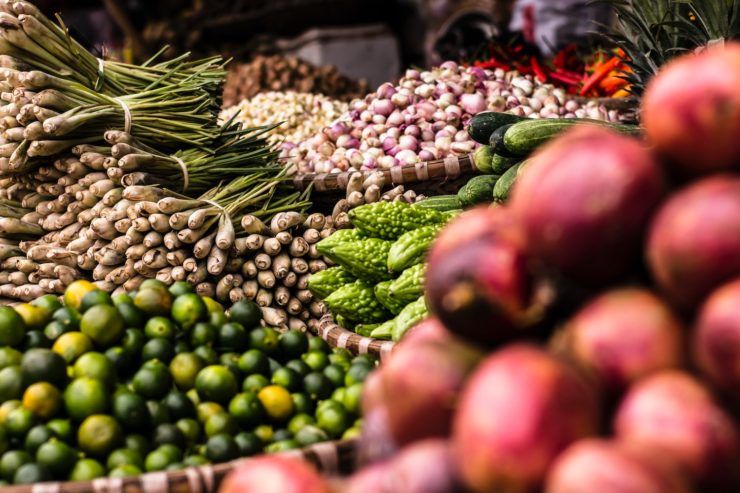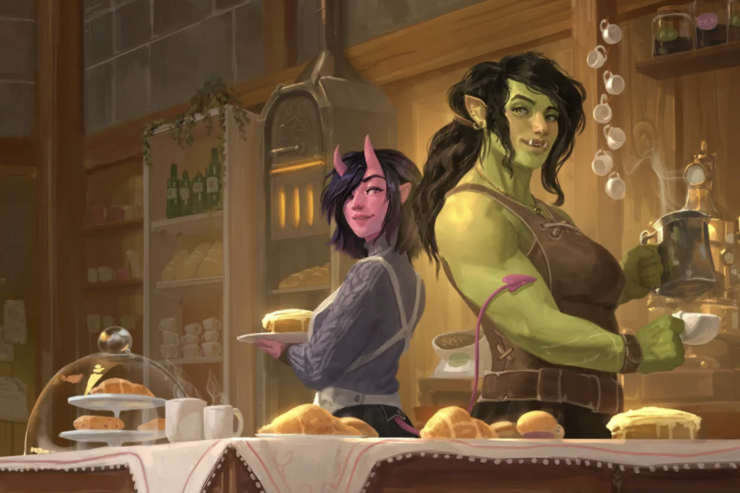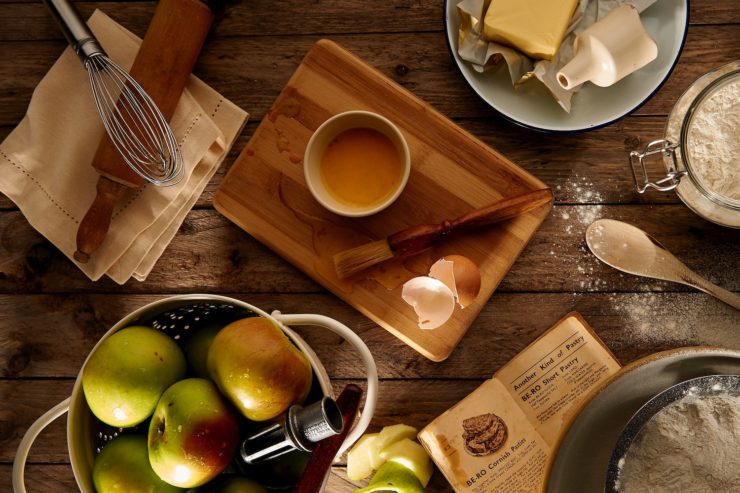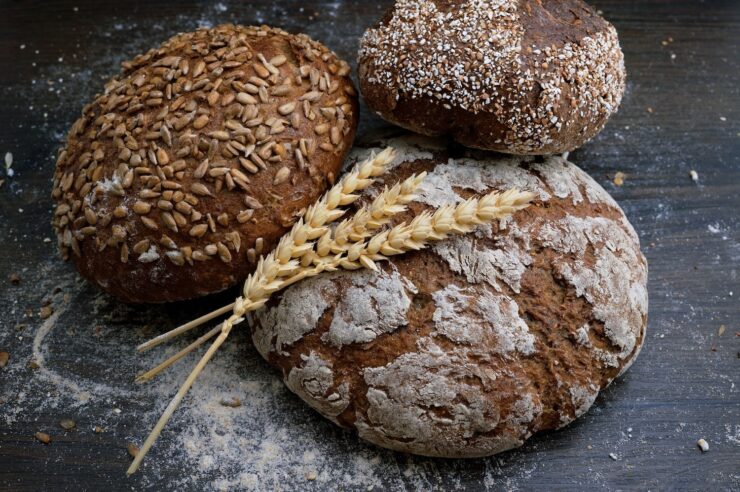Finnish scientists are working on an innovative protein source. (In case you don’t want to click on the link: scientists are making protein flour from CO2, other common elements, electricity [which could come from solar], and bacteria) This process, if successful and scalable, promises some degree of protection against agricultural disruption due to climate change—perhaps even the end of famine.1
I hope this, or something like this, can eventually replace much of modern agriculture, since, according to my math, I think that we are currently doing it all wrong.2 Food being the primary need that it is, it is no surprise that science fiction authors have based plots on new forms of nutrition. Want to guess how many examples follow?
The Food of the Gods and How It Came to Earth by H. G. Wells (1904)
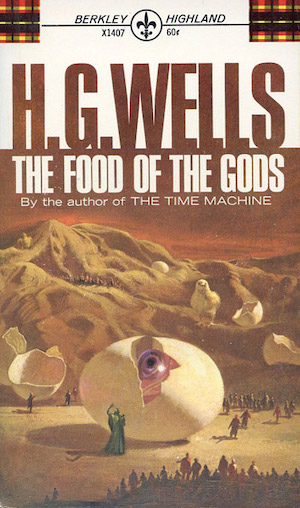
Visionary chemist Mr. Bensington, in concert with equally visionary Professor Redwood, gifts a long-suffering world with herakleophorbia IV, a chemical additive that greatly amplifies animal growth. The pair had very specific applications in mind for their creation—British children shall be as gods, towering over their elders!—but thanks to slovenly containment procedures, the benefits of herakleophorbia IV have spread up and down entire food chains. Welcome to a brave new world of behemoth chickens and foot-long wasps.
Unintended vermin issues aside, Wells takes a curiously pessimistic view of the gap between glorious vision and actual implementation. A society of youth giants sounds like a great idea3 but accommodating forty-foot-tall people in a community designed for six-footers will be challenging, to say the least.
The Space Merchants by Frederik Pohl and C.M. Kornbluth (1953)
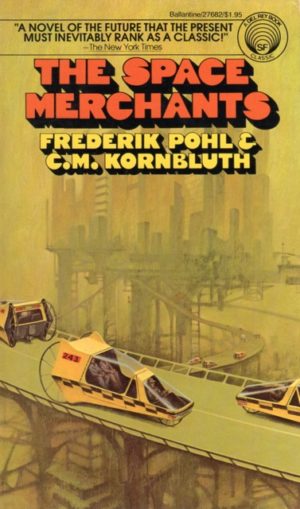
While Pohl and Kornbluth’s satire is primarily focused on a world in which exuberant advertising-driven capitalism has freed itself from any sort of caution or reason, food production features in one memorable sequence. While in hiding, fugitive star-class copywriter Mitch Courtenay finds himself tending Chicken Little, “a gray-brown, rubbery hemisphere (of chicken flesh) some fifteen yards in diameter.” Chicken Little is a vital source of protein for “people from Baffinland to Little America.” Huzzah for progress!
Chicken Little was inspired by Dr. Alexis Carrol’s famous chicken heart experiment, in which Carrol sustained said heart in a flask of his own design for over twenty years. Or at least he said he did. No one has been able to replicate his experiment. Sad news for all of us craving a slice from a VW Beetle-sized hunk of chicken tumor.
“The Food of the Gods” by Arthur C. Clarke (1964)
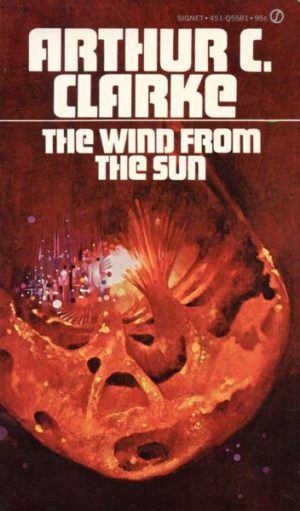
Synthetic food freed humans from dependence on agriculture. Scientists were able to replicate traditional foods, even to invent tasty new ones. But if there are moral reasons not to eat certain foods (take foie gras as an example), is it moral to eat synthetic foie gras? Are there foods that are even more taboo? Should there be laws against synthetic taboo foods? (I’m doing my best not to give away any spoilers.)
Clarke’s case for synthetic food may seem unconvincing at first glance but the math is quite compelling.4 In contrast to Bensington and Redwood’s invention (and really, quite a lot of SF, where the correct reaction to any innovation is to run screaming), the synthesizers work precisely as intended. The sole hitch with this particular implementation is a simple marketing issue.
Delicious in Dungeon by Ryōko Kui (2014)
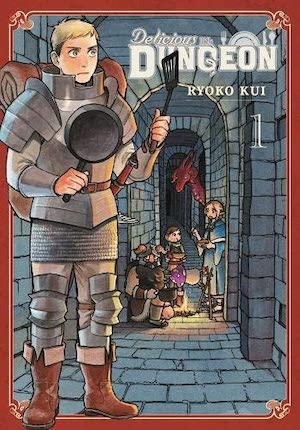
While exploring one of the labyrinthine dungeons that dot his world, Laios and his friends are attacked by a red dragon. They are saved by Laios’ sister Falin. Even as she herself was being consumed, Falin teleported her brother and friends to safety. Falin can still be saved… if the group can track down the dragon, kill it, and resurrect Falin before she is completely digested. The sticking point is food, of which the group has little. Or perhaps they are surrounded by an abundance food, if they can bring themselves to consider the monsters of the dungeon as food.
No matter how catastrophic the events in each volume of this ongoing manga, the author always finds time to detail how precisely the party cooks their latest repast. To read this fantasy adventure manga is to be perpetually peckish.
NoFood by Sarah Tolmie (2015)

Total Gastric Bypass liberated the wealthy from the demands of their digestive systems. They are fed by alternate means and no longer need to consume real food. Is this the end of high-end restaurants? Not if you believe the visionaries behind the exclusive eatery known as NoFood.
This collection of satirical pieces explores a world in the rich get what they want even if it isn’t a good idea. Isn’t that the world towards which we should all be working?
I’m sure there are other works that mention alternative nutrition. If you know of any noteworthy examples, please mention them in comments… which are, as ever, below.
- Now, some will assert passionately that there’s more to food than simple utilitarian nutritional and ecological goals. Fair enough. But if the manner in which you tackle the problem doesn’t tackle first order concerns, secondary issues won’t matter. ↩︎
- This will require some easy grade-school math: Each human requires about 100 watts in suitable chemical bonds to function. 8 billion people at 100 watts each works out to 800,000,000,000 watts. On average, each square meter of the Earth receives about 240 watts from the sun. We can get the necessary 800,000,000,000 watts from a mere 3,000,000,000 square meters, or a square plot of land, 55 × 55 kilometers. That’s assuming 100 percent efficiency. If we posit a mere ten percent efficiency, we would only need a plot of land 175 × 175 kilometers. Yet our current agricultural methods are so incredibly inefficient that we have had to reshape vast swaths of whole continents simply to feed ourselves. Glass half-full assessment: we have lots of room for improvement. Go team human! ↩︎
- I can’t really think of any good reason to supersize humans, but then I’m not an entrepreneur. Presumably there would be new markets for supersized clothing, houses, etc. ↩︎
- Or would be if there was any math. For some reason, Clarke opted not to bring his story to a complete halt with a page of equations. Which reminds me, have I mentioned any Fred Hoyle novels recently? ↩︎










